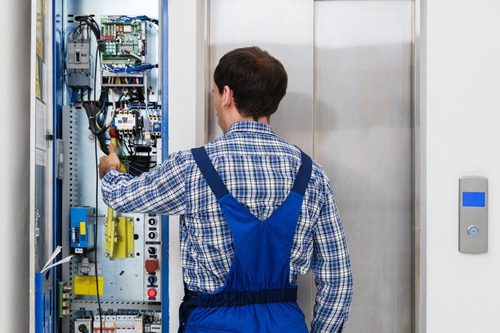Comprehensive Guide to Lift Solutions and Their Upkeep
Navigating the complex world of lift systems and their maintenance is a job that demands precision and expertise. From the numerous types of elevator systems in usage to the thorough adherence to safety regulations, the upkeep of these upright transport gadgets is a complex undertaking.
Kinds of Lift Systems
Lift systems can be found in different types, each designed to fit particular building demands and customer demands. One of the most common kinds include hydraulic elevators, grip lifts, machine-room-less lifts, and vacuum lifts. Hydraulic elevators are ideal for low-rise buildings and use a hydraulic piston to relocate the lift car. Grip lifts, on the various other hand, are much more suited for skyscrapers and make use of steel ropes and counterweights to relocate the automobile. Machine-room-less lifts are a space-saving option as they do not require a separate equipment area for the elevator machinery. Vacuum lifts, an extra modern development, use air stress differentials to move the car within a clear tube.
Each sort of elevator system has its very own benefits and negative aspects, making it vital for structure owners and designers to very carefully consider their certain needs before selecting the most suitable option. Elements such as constructing height, room availability, power efficiency, and budget constraints all play a substantial function in figuring out the finest elevator system for a specific building.
Usual Maintenance Problems
Regular upkeep of elevator systems is crucial to make certain smooth operation and lengthen their lifespan. Despite regular maintenance, lift systems can still experience typical upkeep issues that need to be promptly addressed to prevent interruptions in service. Regular evaluations and aggressive upkeep can help identify and solve these common maintenance concerns prior to they escalate and affect the general efficiency of the elevator system.
Safety And Security Regulations and Compliance
Sticking to strict safety and security regulations and making sure conformity with market requirements are paramount for keeping the functional integrity of lift systems. Elevators undergo a detailed collection of safety and security regulations to secure travelers, maintenance workers, and the public. Regulative bodies such as the Occupational Safety And Security and Health And Wellness Administration (OSHA) in the USA and the European Lift Organization (ELA) in Europe develop guidelines that cover numerous elements of lift design, operation, maintenance, and setup.
Compliance with these policies is not just a lawful demand yet also a moral responsibility for structure owners and lift maintenance business. Normal assessments, maintenance checks, and adherence to safety procedures outlined in the guidelines are vital to ensure the risk-free and reliable procedure of lift systems.
Finest Practices for Upkeep

One more important best method is to promptly resolve any kind of uncommon sounds or reported problems to stop more damages. Executing an aggressive approach to maintenance can conserve time and money in the long run by staying clear of pricey repair services or substitutes. Structure owners need to additionally think about purchasing modernization upgrades to improve the performance and safety of their lift systems. By adhering to these ideal practices, lift systems can run smoothly and safely, giving dependable vertical transportation for passengers.

Advanced Technologies for Effectiveness
Applying cutting-edge innovations in lift systems can significantly enhance operational performance and passenger experience. lift maintenance london. One of the key advancements in lift modern technology is the intro of location control systems. These systems enable guests to input their preferred flooring before going into the lift, which then routes them to one of the most effective cars and truck. By maximizing and decreasing unnecessary stops traveling courses, location control systems reduce wait times and congestion in high-traffic structures.
Furthermore, the integration of wise sensors and anticipating maintenance capabilities has actually reinvented lift maintenance. These sensing units can identify prospective concerns prior to they escalate, allowing positive upkeep interventions and decreasing downtime. Furthermore, the use of energy-efficient elements and regenerative drives helps in reducing power usage and operating expense in elevator systems.
Additionally, the application of cloud-based surveillance and remote diagnostics enables real-time monitoring of elevator efficiency and prompt troubleshooting of any breakdowns. This aggressive approach not only enhances system reliability however additionally enhances the have a peek at this site general customer experience by guaranteeing continuous and smooth lift procedures.
Final Thought
In verdict, comprehending the different sorts of lift systems, common upkeep problems, security guidelines, ideal upkeep methods, and progressed technologies for performance is crucial for ensuring the smooth procedure of elevators. By sticking to safety and security guidelines and applying ideal practices for upkeep, building proprietors can extend the lifespan of their lift systems and guarantee the security of guests. It is essential to remain updated on the most up to date developments in lift modern technology to boost efficiency and integrity.
The most usual kinds include hydraulic elevators, grip lifts, machine-room-less elevators, and vacuum cleaner elevators. Hydraulic lifts are suitable for low-rise buildings and utilize a hydraulic piston to relocate the elevator vehicle. Machine-room-less elevators are a space-saving alternative as they do not require a separate machine area for the elevator machinery. Regular assessments and positive maintenance can help determine and solve these typical upkeep issues before they intensify and impact the general performance of the elevator system.
